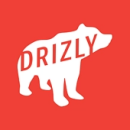After the last two years, much of the tech industry is familiar with the pros and cons of remote work. For some people, it dramatically increases productivity and satisfaction — for others the personal connection and community provided by the office environment is deeply missed. Hybrid work, in theory, provides a balance between the two.
Yet the term “hybrid work” encompasses a wide variety of work environments. Are some employees entirely in-office and others completely remote, does everyone have a few days in the office each week, or is it something in between?
There’s no hybrid approach that works for everyone. In Gallup’s 2022 poll on hybrid work, answers about when and how often employees wanted to be in the office varied wildly — 40 percent wanted to be in 2-3 days a week, with 30 percent wanting fewer and 30 percent wanting more. The spread was just as wide with regards to coordination with their team: 40 percent wanted complete autonomy in choosing the days they come in, while 60 percent wanted some coordination by management — but couldn’t agree on how much. As such, each company needs to determine what hybrid model works best for them by assessing their goals and team member needs.
Boston companies Drizly and Flexcar are making those assessments, and each one has arrived at a unique conclusion about what works for them. Built In Boston sat down with Drizly’s LDP lead Kimberly Bringas to discuss their remote-first approach and Flexcar’s VP of people Lydia Bowers to learn about what she calls their “in-person enabled” model. While they look very different, these approaches have one thing in common — they’re tailored to their people and their business.
Drizly is an alcohol marketplace partnered with retail stores across the country.
How would you describe your current work model?
Drizly is remote-first — even though we’re a hybrid model as we do have offices in Boston and Denver. It was important to us to provide equitable access to opportunity, and being remote-first means we can provide this structure to our employees. It’s also worth noting that being remote-first is different from being remote-friendly. This is an important distinction — it means that we provide our employees with the same exact experience no matter where they are seated in the country.
How often are employees expected to come into the office, and why does this schedule work for your company?
It of course can vary by the role — if we’re hiring specifically for an office manager, that person would need to be in the office. But otherwise, there are no strict mandates.
A good number of us are not even close to an office. As of January of this year, we have employees in over 23 states — a wild statistic for us, because pre-pandemic we were absolutely an office-first company. We had our offices in Boston and Denver and it was an expectation that folks would come in. But the pandemic forced us to adapt and we saw that working remotely could be part of our longer term strategy. It allowed us to broaden our talent pool and it showed us the value in providing flexibility for our employees.
Leaders need to demonstrate start and stop times and model for others that it’s healthy to take vacation.”
What are the key cultural or organizational ingredients that make your hybrid model work?
For us, it comes from the top, with our leaders demonstrating wellness practices coupled with strong boundary setting. When you don’t have the normal commute or the office to provide guard rails to your day, there can be a tendency to just keep working or even not taking off the proper time to rest and reset — leaders need to demonstrate start and stop times, display away messages in slack and model for others that it’s healthy to take vacation. One of our stats that we look at is PTO practices, because we have a minimum for vacation days: We want everyone to take one week of vacation per quarter. If the leaders model this, their direct reports will model it as well.
Equally important to wellness is having a growth mindset. We introduced our third value, “We Grow,” in order for us to stay competitive and evolve our company culture. While that might not feel like a remote-first value, putting growth front and center when it’s harder to see opportunities in this remote world showcases leadership’s investment in each and every employee at Drizly.
Flexcar offers a subscription vehicle service that includes insurance and maintenance.
How would you describe your current work model?
Rather than framing around remote vs in-office, I’d rather frame our work model as “in-person enabled.” While more than half of our HQ team is based in Boston, we still have team members scattered across the US, and even in India and Jamaica. We really encourage our team to meet in person — twice a week in-office for Boston-based employees and several times a year for those outside Boston — because we see deep value in those in-person connections. I recently came back from visiting our India office, and although I’ve worked closely with our team there for months, seeing them in person really helped solidify our working norms and connection as a team.
How often are employees expected to come into the office, and why does this schedule work for your company?
Over the last two years, the primary feedback I’ve heard is about flexibility — we all want the flexibility to manage our time in the way that makes sense for us. Two office visits a week enables our in-person goals of connection, while also enabling flexibility for the team. Concentrating our in-office time to Monday through Thursday ensures overlap among individuals and teams. As a fast growing company, we believe in-person connection also keeps us informed and moving toward a shared goal, so we wanted to design our in-person work so that teams could bump into each other while in the office for those spontaneous opportunities of interaction. We also offer remote-first team building activities to try to create that same spontaneous connection across teams — but it’s challenging, I won’t lie, and we’re still working on getting that piece of our culture right.
The team is really open to experimenting with new ways of working and new ideas.”
What are the key cultural or organizational ingredients that make your hybrid model work?
Flexsters are curious and collaborative. To tackle an opportunity as big as we are — disrupting car ownership — we have to be. That curiosity is a crucial piece of what makes our hybrid model work. The team is really open to experimenting with new ways of working and new ideas, giving feedback and contributing to the future of what work will look like for Flexcar.









